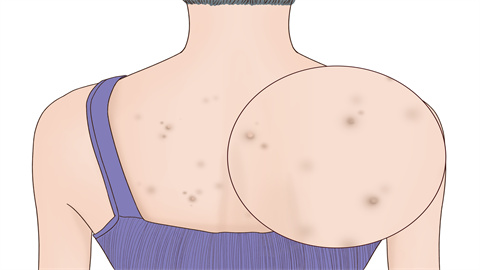Why does melanin deposition occur after inflammatory infections?
Post-inflammatory hyperpigmentation may typically be related to individual constitution, ultraviolet exposure, drug side effects, basal layer damage of epidermis, stimulation by immune cells and mediators, etc. It is recommended to visit a hospital to identify the specific cause and follow medical instructions for treatment. The analysis is as follows:

1. Individual Constitution
Differences in individual constitution may lead to varying sensitivities to inflammation and ultraviolet radiation. Some people may naturally have more sensitive skin, making them prone to hyperpigmentation after inflammation or UV exposure. Patients can visit a hospital for laser treatment, which uses specific wavelengths of laser to target between the epidermis and dermis, promoting collagen regeneration, helping tighten the skin, and improving the above symptoms. The general reference price for laser treatment is 1000-3000 yuan per session, and noticeable improvement may be seen after 3-6 sessions.
2. Ultraviolet Exposure
Extended sun exposure or UV radiation can damage skin cells, activate tyrosinase activity, and thereby promote melanin synthesis and deposition. After inflammation or infection, damaged skin may become more susceptible to UV damage, thus worsening pigmentation. When going outdoors, wear a sun hat, sunglasses, long-sleeved clothing, and trousers to block direct sunlight. If necessary, patients may consider chemical peeling at a reputable hospital, which accelerates skin cell renewal and metabolism through the exfoliating effect of fruit acid, promoting new cell growth and shedding of old cells. The general reference price for chemical peeling is about 1500-2500 yuan per session, and improvement may be observed after 1-2 months.
3. Drug Side Effects
Certain medications, such as oral contraceptives and phenytoin sodium, may affect the endocrine system or interfere with melanin metabolic pathways, influencing melanin transport and deposition, thereby worsening pigmentation after inflammation. If hyperpigmentation is caused by drug side effects, it is advisable to consult with a physician to consider adjusting the dosage or switching to alternative medications.
4. Basal Layer Damage of Epidermis
Inflammation may cause damage to the basal layer of the epidermis, weakening the skin barrier function and making it easier for melanin to deposit on the skin surface, resulting in pigmentation. Patients may consider microneedling treatment at a hospital, which involves using tiny needles to create micro-injuries in the skin, promoting collagen regeneration and skin metabolism to improve pigmentation. The general reference price for microneedling is 2000-4000 yuan per session, and improvement may be seen after 3-5 treatments. Mild pain and redness may occur after the procedure.
5. Stimulation by Immune Cells and Mediators
During the inflammatory process, immune cells such as macrophages and lymphocytes are activated, producing various inflammatory mediators and cytokines. These substances can stimulate melanocytes to produce more melanin, leading to pigmentation. Under a physician's guidance, patients may use anti-inflammatory medications or topical ointments, such as hydrocortisone cream, mupirocin ointment, or erythromycin ointment, to reduce the inflammatory response and decrease the release of inflammatory mediators.
During the recovery period, maintain a balanced diet and consume more foods rich in vitamin C, vitamin E, and antioxidants, such as fruits and vegetables, which can help reduce melanin formation.









